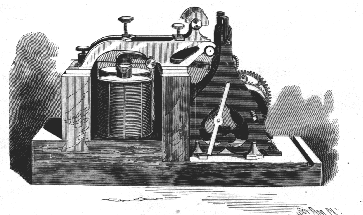
Morse telegraph

Guglielmo Marconi

Nikola Tesla
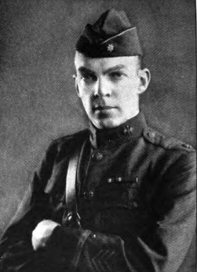
Edwin Armstrong, pioneer radio inventor
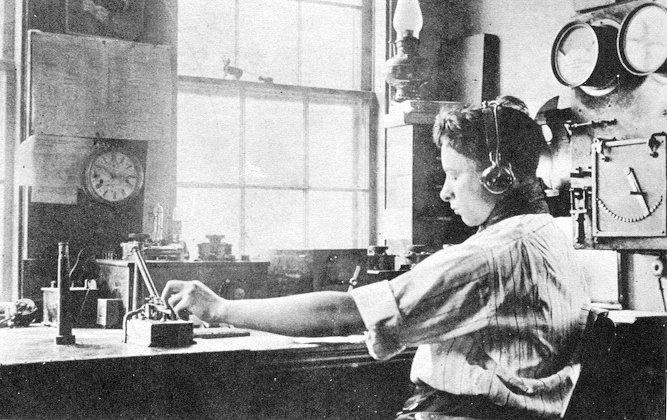
Marconi radio operator David Sarnoff monitors Titanic disaster
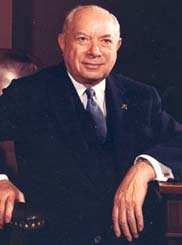
Sarnoff as chairman of RCA
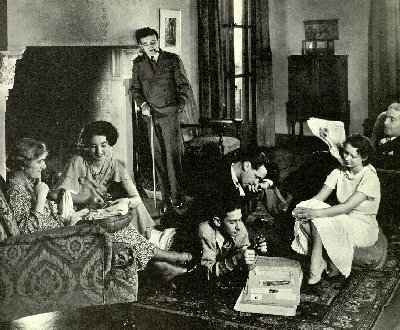
The cast of One Man's Family, one of Radio's most successful serials.
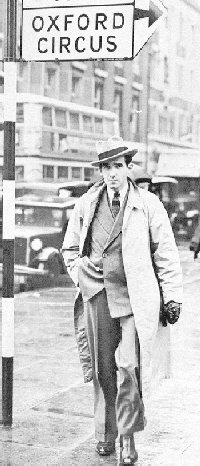
War in Europe unfolds and a new breed of reporter, pioneered by the likes of Edward R. Murrow, carries war news to the folks back home
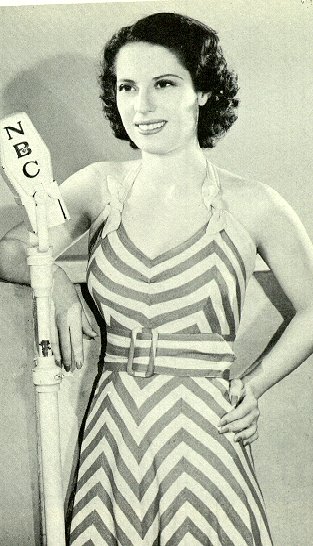
Forced to compete with the new medium of Television, Radio fights for its existence with new post-war era variety and drama programs. Above, singer Dinah Shore reached popularity during this period.
RADIO’S TIMELINE
From Interactive Arts, Pennsylvania State University
Pre-1900 - The Theory and Foundation
1600 William Gilbert suggests a link between static electricity and magnetism.
William Gilbert 1544-1603
Born in England, he served Queen Elizabeth I as a physician. During his lifetime he performed many experiments on the nature of magnetism, and eventually offered the first comprehensive theories of magnetism, based on his assumption that the Earth itself was a large magnet.
Modern aircraft pilots are well aquatinted with at least two of his findings, Magnetic Dip, and Magnetic Variation of a compass.
1844
Samuel Finley Breese Morse 1791-1872
By the age of 21, Samuel Morse showed an interest in electrical experimentation. A shipboard conversation in 1832 planted the seed for a method of telegraphy, and by 1835 the basic physical elements of a relay system were in place. A patent was issued in 1840, and the U.S. Congress gave him a grant for $30,000 to construct a line between Washington and Baltimore. The first message on this line was sent on May 24th, 1844.
· The "Morse Code" was invented by Morse, and his assistant Alfred Vail about 1840. The original code was simplified in 1851, and is called the 'Continental', or 'International' Morse code.
· Samuel F.B. Morse sends the first message of any distance by Telegraph - about 40 miles. The message -"What hath God wrought!" The wired Telegraph and Morse Code are the first long distance, instant communication system the world has known.
1876
Alexander Graham Bell 1847-1922
Bell was born in Scottland, and was home schooled until the age of ten. As a boy, his experiments with speech and sound reproduction led to a lifelong interest in the field.
He was granted a patent in 1874 on a method of sending two or more telegraphic messages on the same wire, at the same time. The next year, as a result of an accident, words to the effect of "Watson - come here, I want you" were reproduced electronically by his 'telephone'. In August of 1876 the distance spanned by telephone was 8 miles, and 'long distance' became a reality by the end of that year, as he communicated over 143 miles.
In 1880 Bell achieved the first wireless transmission of speech - using his invention -- the 'photophone' -- to transmit words on a beam of light.
Alexander G. Bell demonstrates the telephone.
1877
Thomas Alva Edison 1847-1931
Edison was born in Milan, Ohio in 1847. A prolific inventor - in 1879 he developed the first commercially practical incandescent lamp. By 1882 he had developed a central power station for his lamps - necessary before they would become widely used. He invented the Stock Ticker, alkaline storage batteries, the carbon microphone and of course, the phonograph. In all, over 1000 of his inventions held patents - including a method of wireless telegraphy based on magnetic induction.
Thomas A. Edison records sound on cylinders. The first recording - "Mary had a little lamb."
1878
Edison begins work on the electric light.
1879
· The Berlin Academy of Sciences offers a prize to the scientist who can show experimentally that a changing electric field generates a transient electric field, and vice-versa. The challenge is taken up by, among others...Heinrich Hertz.
Pre-1900 - The Theory and Foundation
1883
The Edison Effect is discovered while Thomas Edison was trying to find a way to keep the inside of his electric lights free of soot. He actually placed a metal plate inside the bulb and connected a wire to it creating a diode! Unfortunately, he did not realize the implications - or did not take time to pursue them because of other interests at the time. Edison patents the Fuse.
1887
Radio Frequency and Wavelength Ranges
Radio waves have a wide range of applications, including communication during emergency rescues (transistor and shortwave radios), international broadcasts (satellites), and cooking food (microwaves). A radio wave is described by its wavelength, the distance from one crest to the next, or its frequency, the number of crests that move past a point in one second. Wavelengths of radio waves range from 100,000 m (270,000 ft) to 1 mm (.004 in). Frequencies range from 3 kilohertz to 300 gigahertz.
· Heinrich Hertz 1857-1894 proves Maxwell's theory that electricity can travel through space in waves. He went on to show that these waves shared the same physical properties as light.
· Hertz was born in Hamburg, Germany and attended the University of Berlin. In 1883 he became an instructor at Kiel University - where he first studied the work of Maxwell.
· Maxwell had theorized that electric fields in the form of waves propagated at the speed of light rather than instantaneously. To prove this, Hertz conducted a series of experiments between 1886 and 1889 involving measuring the strength of oscillations at differing points along a sheet of zinc. These experiments confirmed the existence of waves, and that these waves acted identical to light in regards to refraction and polarization. In short, Hertz had proven the theory of Maxwell that light itself was a form of electromagnetic radiation.
1891
Edison receives a patent for wireless telegraphy.
1894 Guglielmo Marconi 1874-1937
Probably the name associated most with the invention of radio, Marconi was certainly a visionary of what it could become. Born into a very well-to-do family in Bologna, Italy, Marconi first read of the pioneering work in radio in 1894, in an obituary of Heinrich Hertz. He was the first to realized the possibility of using this new technology as a form of communication, and he began his life work. Within the year he was ringing a bell by wireless control a few yards away, and by 1897 the distance spanned by his wireless was nearly 10 miles.
Among his innovations were a greatly improved 'coherer' or detector, antenna work - including an earth ground which greatly increased his range, and the use of a high antenna. A vertical antenna with an earth ground is still referred to as a 'Marconi'. He also worked with directional antenna's.
At the age of 22 he filed for his first patent (#7777) for a system of radio communication. Five years later he succeeded in signaling across the Atlantic Ocean. Guglielmo Marconi reads about Heinrich Hertz's discovery of electro-magnetic waves.
1895
Marconi succeeds in signaling across the family estate by radio - a distance of about 1.2 miles.
1896
· Marconi transports his wireless invention to England. Upon entry to the country, nervous customs officials smash his apparatus under suspicion that it may be part of an Italian anarchist plot.
· Nikola Tesla introduces the use of a rotary gap for his spark transmitter .
· Marconi takes out patents in England for 'wireless telegraphy'.
1897
· Joseph John Thompson discovers the existence of the electron.
· The Marconi Company is formed in England.
1898
· Marconi installs the worlds first commercial radio service on Rathlin Island off the coast of Ireland.
1899
· Marconi installs wireless equipment on three British battleships.
· Nathan B. Stubblefield reportedly transmits voice messages by wireless.
· Marconi sends radio messages across the English Channel.
· Marconi arrives in New York with his wireless equipment to issue radio reports on a yacht race.
1900-1909 - Early Experiments
1900
Nikola Tesla 1856-1943
Tesla was born in Croatia, but moved to the United States in 1884. Following his move he worked for Thomas Edison designing dynamos, and then established his own laboratory in 1887.
Tesla's work laid the foundations for large scale electric power generation and transmission. Tesla experimented with high frequency alternators and invented the 'Tesla Coil' as a means for even higher voltages. His work included the for runner of the neon and fluorescent lights, he predicted radio as a means of communication in 1893, and spent a large amount of time in an effort to transmit electric power without wires. He built the largest Tesla coil ever made at Colorado Springs - a twelve million volt device which drew an arc up to 135 feet in length.
· Other predictions by Tesla included radar in 1917, and radio services of pictures, time, and weather information in 1900.
· Reginald Fessenden theorizes that an alternator, as developed by Tesla, could generate an electromagnetic wave able to carry voice and music. He uses a spark generator to send the human voice the distance of about one mile.
1901
· Marconi receives the letter "S" by Morse code (35 K Wav of a spark transmitter) in St. Johns, Newfoundland. John A. Fleming was at the transmitter in England.
· Canadian Marconi Stations constructed
· Marconi's antenna farm at Poldhu, England is constructed.
· Karl Ferdinand Braun introduces the use of a crystal detector as part of a wireless receiver.
1902
· Reginald Fessenden invents the 'Electrolytic Detector'.
· The magnetic detector is invented by Marconi.
· Fessenden forms the National Electric Signaling Company.
· The DeForest Wireless Telegraph Company is formed.
1904
John Ambrose Fleming 1849-1945
Fleming was born in Lancaster, England and studied electricity and mathematics under James Clerk Maxwell. He served a number of electric lighting companies as advisor and engineer, and was a scientific consultant for the Marconi Company from 1899-1905. Besides his work in theory, he was also active in the practical application of his work. He made improvements in electric lamps, generators, and many pieces of radio-telegraph apparatus.
In 1904, while searching for a better detector for wireless signals he recalled his work for Edison in the early 1880's - and the phenomenon known as the Edison Effect. He fashioned a lamp with a metal cylinder surrounding the filament, ran wires to the outside of the envelope - and started the industry of electronics with his electrical 'valve'.
The Fleming Valve
· John Ambrose Fleming invents the first tube, the "Fleming Valve", or as he called it..an Oscillation Valve. His valve is a two element rectifier, made by inserting a metal plate in one of Edison's electric light bulbs.
· Fleming serves as a scientific consultant to the Marconi company, and designs many pieces of early wireless apparatus. He is charged to develop a new detector for wireless signals.
1900-1909 - Early Experiments
1906
· The 'Alexanderson Alternator' is delivered to Fessenden's station. On Christmas Eve, 1906 he broadcasts speech and music to surprised shipboard operators. He broadcasts on 42 Kilohertz at 1 kilowatt. The programming includes a female voice singing a Christmas carol, a violin solo by Fessenden, and an invitation to report on reception.
Reginald Aubrey Fessenden 1866-1932
· Fessenden, a Canadian born in East Bolton, Quebec worked as a tester and Chemist in the Edison Machine works of New York, and later at Edison's laboratory in New Jersey. Among his patents were the electrolytic detector - far more sensitive than other early methods of detection, and the process of 'heterodyning' a signal - mixing it with another frequency to create a 'sum' and 'difference' of the original frequency.
· Personally, he is said to have been a bit arrogant - using phrases such as 'Don't try to think - you haven't the brain for it'. He obtained over 500 patents in his lifetime, many for advances in the art of radio.
1906
· Henry H.C. Dunwoody patents the use of carborundum in detectors.
Lee DeForest 1873-1961
· Born in Council Bluffs, Iowa to a Congregational minister, Lee Deforest made his greatest contribution to radio and electronics with his invention of the Triode. Although he flooded the patent office with ideas, only a relative few of his over 300 patents proved important.
· In the early years of radio he installed many wireless transmitting stations, and his became one of the most famous of the early companies. His business sense however, was lacking, and he was taken advantage of by several associates.
· He concentrated his efforts on moving pictures in the 1920's - claiming the field of radio was getting too crowded. Later years found him suing other inventors - notably Howard Armstrong - for patent infringement.
· Lee DeForest patents the "Audion" as a "new receiver for wireless telegraphy." He added a 'Grid' to the Fleming Valve, creating the 'Triode'.
1907
· The first 'Broadcasts' of records are done to aid in testing, so the operator didn't have to talk.
· The worlds first Trans-Atlantic commercial wireless service is established by Marconi with stations at Clifden, Ireland and Glace Bay, Nova Scotia.
1909
· Braun and Marconi share the Nobel Prize in physics for their work in the development of wireless telegraphy.
· Charles 'Doc' Herrold begins a regular schedule of broadcasts from his "Herrold College of Wireless and Engineering" at San Jose, CA.
· S.S. Republic sinks after a collision. All but two lives are saved with the help of wireless.
1910-1919 - Technical Advances
The era of Major Edward Armstrong entering the field of radio development
1910
· DeForest broadcasts Enrico Caruso from the stage of the Metropolitan
1911
· Young radio amateurs are building receivers with whatever parts are available. Although headphones can be purchased...many public telephone booths become inoperative.
Armstrong Edwin Armstrong 1890-1954
· Born in New York City, Armstrong graduated from Columbia University in 1913, and received his first patent for his regenerative receiver in 1914.
· Without a doubt, Edwin Armstrong did more to advance the art of radio than any other inventor. Every radio and television receiver uses Armstrong's inventions. His list of patents and inventions includes regeneration, the superheterodyne receiver, and wide-band FM. During war time, Armstrong freely gave use of his patents to the military. From 1931 his efforts went into developing and promoting FM, and defending his inventions against suits by DeForest. Many years later almost every suit was decided in favor of Armstrong.
· Armstrong committed suicide in 1954.
1912
· Edwin Armstrong invents regeneration.
· "Edwin Armstrong found the radio telephone talking like a hair-lipped man and left it singing like a nightingale."
· The ocean liner, "Titanic" hits an iceberg and sinks. The wireless distress call was heard 58 miles away by the liner "Carpathia". Those who made it into lifeboats were rescued 3 1/2 hours later. There were 705 lives saved.
· Congress passes the Radio Act of 1912 to prevent amateur radio operators from interfering with government stations.
· John H. Hammond, Jr. develops equipment to remotely control vessels by radio up to three miles away. Later, many of his patents were sold to the U.S. military for use in radio guidance in weapons delivery systems.
1914
War breaks out in Europe, and Amateur licenses are suspended in almost all foreign countries.
1915
· Human voices are first broadcast across the Atlantic ocean, between Arlington, Virginia and the Eiffel Tower in Paris.
1916
David Sarnoff 1891-1971
· Sarnoff was born in Russia, and moved to New York City as a boy. He worked as a telegraph operator in the Marconi company, and some accounts have him working at the key for three days straight during the Titanic disaster - although there is discussion of this being an exaggeration.
· There is no doubt that Sarnoff was a driven man, and he was a great figure in the growth of broadcasting. Sarnoff became the general manager of RCA in 1921, and quickly became its vice-president. He saw the company through the rise of radio broadcasting, supervised the creation of the first network (NBC) and the move into television. During World War II he was a communications consultant, and for his service was named as a Brigadier General.
· reportedly proposes 'radio music boxes' for the home as a potential business opportunity... and was ignored.
· Wireless is used by the New York city police department.
· Wireless telegraphy is made compulsory on all British vessels over 3,000 tons. ....25 minutes of scratching on a crystal with the cats-whisker to hear a station 50 miles away....Success!
1917
· America enters the First World War, and all patent protection is set aside for the duration. Many advances are made in manufacturing and design due to this measure.
· Amateur radio experimenters pull down their antennas and pack away their equipment by government order.
1918
· Radio technology is used in detection of submarines, and by the US Signal Corps in France.
· 5700 ships are now equipped with wireless telegraphy worldwide.
1919
· The War is over!
· Owen D. Young starts the Radio Corporation of America (RCA) - an offshoot of General Electric. Within the year he has an agreement with GE, RCA, and AT&T for sharing all radio patents between themselves.
· Dr. Frank Conrad , a Westinghouse engineer, broadcasts a regular schedule of records from his garage in Pittsburgh, and begins to take requests from the avalanche of mail he receives. A local department store mentions those broadcasts in one of their newspaper advertisements, and promptly sells out of its radio equipment. Westinghouse takes notice, and begins to see the possibilities for broadcasting.
1920-1929 - Early Broadcasting
1920
· Between 1920 and 1925, radio broadcasters were unregulated, the airwaves were a mess. Although most experimenters and pioneers used the longer waves, Marconi never did fully abandon his efforts to use the short-wave bands.
· Westinghouse builds a 100 watt radio station in a little shack atop its nine story factory in Pittsburgh... KDKA. November 2, 1920, Frank Conrad and Donald Little broadcast election returns from 8:00PM till after Midnight- an event that is credited with starting a rush to build stations, and purchase receivers.
· The first commercial radio stations with regularly scheduled broadcasts were heard in 1920. WWJ (Detroit) (then known as "8MK") went on-air in August. KDKA (Pittsburgh) went on-air in November with the results of the 1920 Harding - Cox Presidential election. [Some sources claim KQW in San Jose, California deserves the title of "First Commercial Station" because of its broadcasting in 1912.]
· By late in the year, radio is being acclaimed as the newest form of entertainment for the home.
· The 'C' battery is introduced to provide bias voltage. This helps the 'B' battery last longer by reducing the amount of plate current needed on tubes.
· Radio experimenters spent over 2 Million dollars for radio parts in 1920.
1921
· A religious service was broadcast from Calvary Episcopal Church at Pittsburgh through KDKA. The engineers wore choir robes, as not to distract from the service.
· Station WJC (soon to become WABC) in Newark, NJ broadcasts regular bedtime stories.
· Station 9JR broadcasts grain quotations to grain elevator operators using a $5 Sears-Roebuck broadcasting set and a 10 watt transmitter.
· David Sarnoff is named General Manager of RCA.
· The Dempsey-Carpenter fight is broadcast on WJY. This fight is broadcast to an audience estimated at 300,000. At nearly the same time as the fight ended, the transmitter overloaded - and was described later as a 'molten mass'. (Dempsey knocked out Carpenter in the Fourth round)
· Westinghouse joins in the agreement with RCA, GE and AT&T. They share a pool of over 2000 radio patents.
· There are 5 broadcasting stations on the air in December of 1921.
· WJZ broadcasts a Baseball World series game, pitch by pitch, getting the information by telephone.
· President Woodrow Wilson used the radio during the latter part of his tenure (1913 - 1921).
1922
· The "Newark Sunday Call" newspaper installs a transmitter in an automobile. The antenna was strung between posts mounted on the front and rear bumpers.
· In September of 1922 there are 537 stations broadcasting.
· Approx. 100,000 radio sets are produced this year. Radio prices begin to fall, as competition to market radio's grows.
· WEAF (Owned by AT&T) in Albany, New York is the first to offer air time to advertisers. $9/30 seconds. It was August 28th, at 5:15 PM - an infomercial on the Hawthorne apartment complex in Queens.
· Edwin Armstrong invents the 'Super-Regenerative' receiver.
· The Marconi Company starts '2LO' in London - Britain's first broadcasting station.
· National political conventions were heard on a nationwide network during the 1922 nomination season.
1923
· Packaging-Sponsors begin to hire producers and produce content.
· Ever-Ready hour is the first business sponsored program
· First Radio Broadcast of a World Series
· US President Harding has a radio installed at the White House.
· The first Network broadcast was made, as WEAF, WJAR and WMAF are linked by phone.
· New radios became obsolete in 3 to 6 months time.
· Approx. 500,000 radio sets are produced this year.
· Edwin Armstrong invents the first 'Portable' radio. A wedding gift to his wife.
1924
· In 1924, the A & P Gypsies appeared on WEAF (New York), and moved to NBC Red in 1926. For the next 10 years, this musical show (Harry Horlick and his orchestra) was heard nationally, on NBC Red or NBC Blue.
· The National Barn Dance first heard on WLS (Chicago). The show was broadcast between 4/19/24 and 4/30/60 (and only 14 recorded shows remain)
· The present A.M. band is assigned. It spans 550 - 1550 kilocycles.
· Over 1400 stations are now broadcasting.
· It is estimated that over 3 million radio sets are in use in the United States.
· Baseball games are broadcast almost daily.
· New radio's - superhets, reflex sets, TRF's, and neutrodynes are much more complex, so a new industry begins to take shape - the radio repairman.
1925
· The Grand Ol' Opry appeared, and was heard on various stations until 1941, when it was picked up by NBC. Grand Ol' Opry was heard on NBC on Saturday nights (at about 9:30 or 10:30 PM) through 1956, when it became syndicated, and was heard on various other stations. Among the shows broadcast that year were several orchestras, Ben Bernie, Will Rogers, Sam and Henry and Father Coughlin. The Betty Crocker Show started on NBC Red.
1926
· Sam & Henry making big splash on local Chicago station. NBC, unsuccessful in their attempt to lure creators Freeman Gosden and Charles Correll to their network, buy the station and make the renamed "Amos & Andy" a national half hour show in 1928.
· The first 'light socket' powered sets are marketed.
· To fight the competition from independently owned stations, Sarnoff gets 14 stations to pool resources and simultaneously broadcast the same professional content. This professional quality programming would knock out most of the independent stations in the coming years.
· RCA, Westinghouse and GE start a network...NBC, the National Broadcasting Corporation.
· A US court decides that the Secretary of Commerce has no power to regulate broadcasting - only to issue licenses, and the chaos on the broadcast bands grows as stations increase power to drown out the competition.
David Sarnoff is named vice president of RCA
· More About Sarnoff, Part One In November 1916, E.J. Nally, vice president of the American division of the Marconi Wireless Telegraph Company, received an unusual memo from one of his young assistants. The memo depicted a future in which music, news, sports, and even lectures could be broadcast over the airwaves, with Marconi reaping millions of dollars in profits from the sale of "radio music boxes." Nally quickly rejected the idea. Marconi sold radios for naval communication; the idea of entertainment radio seemed wrongheaded, if not completely fantastic. At the time, Nally had no way of knowing that the memo's author, twenty-five year-old David Sarnoff, had successfully predicted the multimillion dollar future of radio. Nor did he know that Sarnoff would one day, through a combination of keen foresight, boundless ambition, public relations manipulation, and ruthless opposition to everyone who stood in his way, develop a worldwide communications empire called RCA.
· Sarnoff's optimistic predictions for the future of radio, and belief in his personal vision were largely the by-products of his own dogged determination. Born into appalling poverty in a Jewish settlement near the Russian city of Minsk, Sarnoff came to New York with his family in 1900. He was nine years old at the time. Within days of his arrival, the young immigrant found employment hawking Yiddish newspapers on the mean streets of New York's Lower East Side.
· By the time he was thirteen, he had saved enough cash to buy a newsstand for $200. Profits gained for this early business venture only whetted Sarnoff's appetite for further gain. One Saturday morning in 1906, young Davey, as he was known to his friends, set out to visit the offices of the Herald newspaper to inquire about available positions. Quite by accident, he wandered into the Commercial Cable Company telegraph office instead, where he was hired immediately as a messenger boy--and fired almost as quickly, for requesting time off for the Jewish holidays.
· Undeterred, Sarnoff found work as a messenger boy at Marconi Wireless. He had already begun to develop his skills with a telegraph key, as he read voraciously from any technical journals he could find. In his spare time, he followed Marconi's engineers into their workshops, where he absorbed every possible morsel of technical information. At age sixteen, his persistence paid off. Sarnoff was hired as a junior telegrapher, earning $7.50 per week. A lifetime of vocational improvement through self-education had begun.
· Unrelenting persistence provided David Sarnoff with entree into the practice of wireless telegraphy; tragic accident earned him recognition in the field. On April 14, 1912, the day the S.S. Titanic sank in the frozen North Atlantic, Sarnoff was working as a telegrapher at the Marconi Wireless station atop the Wanamaker Hardware building in New York. His actions at the telegrapher's station following the sinking earned him considerable cache within the confines of Marconi Wireless. The carefully manipulated Sarnoff legend places young Davey at the telegraph, the first to hear news of the Titanic's sinking. More likely, Sarnoff rushed to the telegraph after learning about the accident from newspaper vendors. But there is no disputing that he sent and received wireless messages for seventy-two straight hours, gathering names of survivors as anxious relatives of Titanic passengers congregated on the streets below.
· Sarnoff impressed his superiors with his persistence and ambition. A promotion soon followed. Shortly thereafter, Sarnoff decided to abandon his career as a telegrapher, pursuing instead the business end of the wireless industry. He goal now was to acquire both money and power.
· He decided to pitch his idea for the radio music box to his superiors at Marconi. They, too, turned it down. But their rejection failed to quell his faith in his vision--or his determination to see it realized.
· Sarnoff's next chance came in 1920, with the formation of the Radio Corporation of America (RCA). Created to prevent domination of American strategic communications by a foreign company like the British-owned Marconi, RCA was controlled largely by General Electric, which provided the startup funds. So it was to GE that Sarnoff next pitched his radio music box idea. To his delight, GE agreed to front $2000 for RCA to develop a prototype.
· By 1920, entertainment broadcasting had made its debut on numerous amateur stations, and on KDKA in Pittsburgh, the nation's first licensed station. Still, radio had yet to make the leap from the realm of the hobbyist and into the average home. That was until a broadcast on the night of July 2, 1921, pushed radio forward with the force of a locomotive. And the man who brought America that broadcast was RCA's new general manager, David Sarnoff.
· Sarnoff had correctly gauged the public's huge interest in the heavyweight championship fight between Jack Dempsey and George Carpenter. So he arranged for the fight to be broadcast live by RCA. The event drew hundreds of thousands of listeners. The public got its first real taste of what a radio broadcast could be. Sales soared and Sarnoff came off looking like a visionary.
· Centralization of networks
· "Pay Radio" makes its debut in Philadelphia - Placed in retail stores, these 5 foot high units charge a nickel for 5 minutes of radio. big flop…
1927
· Philo T. Farnsworth makes his application for a patent to cover a complete electronic television system, including an "image dissector tube."
· Radio act of 1927 sought to regulate the 732 stations broadcasting across the US. Further regulation was needed and the Communications act of 1934 established the FCC.
· The FRC, Federal Radio Commission begins to regulate broadcasting. Their first act was to revoke all licenses, and then assign frequencies and power levels.
· Mechanical televisions are being sold in kit form.
The Columbia Broadcasting System - CBS - is started
· CBS Inc., American broadcasting company, with headquarters in New York City. Company operations are chiefly conducted through the CBS/Broadcast Group, which consists of eight divisions: television, radio, news, sports, entertainment, marketing, affiliates, and enterprises. The CBS Television Network distributes programming in news, entertainment, sports, and feature films to more than 200 independently owned and 7 CBS-owned television stations in the United States, as well as to foreign affiliates.
· The company was incorporated in 1927 as United Independent Broadcasters, Incorporated. In 1928 the name was changed to Columbia Broadcasting System, Inc., and in 1974 it officially became CBS Inc. American communications executive William Paley invested in Columbia Broadcasting System, Inc. in 1928 when it was a fledgling radio network. Under his guidance the network expanded from 22 to 114 stations in his first decade with the company.
· With the advent of television in the 1940s, Paley raided rival National Broadcasting Company (NBC) to attract such stars as Jack Benny, George Burns, and Gracie Allen. CBS became the most popular television network and remained at the top of the ratings through the late 1970s. During this period CBS stars such as Ed Sullivan, Lucille Ball, and news journalist Walter Cronkite became prominent personalities. In the early and mid-1980s, and again in the mid-1990s, CBS returned to the top of the network ratings.
· CBS first diversified in 1938 with the acquisition of the American Recording Corporation, which later became Columbia Records. Later interests included the newspaper and magazine businesses, the film business, and music publishing. In the late 1980s CBS consolidated into the core television and radio businesses, selling the music-publishing division in 1986, the magazine division in 1987, and the records division in 1988. By the early 1990s, profits had been reduced as a result of competition from cable companies, video rentals, and the high cost of programming.
1928
· The first experimental TV station begins broadcasting - WGY in Schenectady, NY.
· Independent stations must be located in large metropolitan areas to remain viable
· Sam and Henry became Amos and Andy in 1928 when the show moved to NBC. The Amos and Andy show was on the radio through 1960 - making it the longest-running series in radio history. One of the first comedy series on radio was Amos n' Andy. In fact, at the time, it was the most popular show on radio. Because of this series, sales of radio sets surged. Amos n' Andy was about the life of two black men and their friends. Played by two white men, Charles Correll and Freeman Gosden, the series remained one of the most popular for years. The two actors first were heard on WGN radio as Sam and Henry and the series was an instant hit in the Chicago area. However, two years later the two moved to WMAQ which was becoming the CBS outlet. They could not get the rights to their characters, so they created two new ones they called Amos and Andy and the show premiered in January, 1926. The dramatic series lasted off and on until 1954 when sensitivity to race was becoming a major force in determining the show's popularity.
· The Guy Lombardo Show [1967] started this year, as did the
· The Voice of Firestone and
· Uncle Don [1949]
1929
· 16 independent stations backed by the Columbia record company form the Columbia Broadcasting System to compete with NBC.
· William Paley, Pres. of CBS opens radio for all advertisers and products
· Between 1930 and 1976 CBS is the dominant network in both radio and television.
· RCA gains control of several important radio patents, and begins to license manufacturers to use those designs. Prior to this, radio design was somewhat stifled because no one could legally use the designs of many important circuits.
· Amos 'n' Andy becomes a series on NBC
1930-1939 - The Golden Age
1930
· 12 million homes equipped with radio
1930 New Shows [last broadcast date]:
· Sherlock Holmes [1956]
· Believe it or Not [1948]
· Death Valley Days [1945]
· The First Nighter [1949]
· Rin-Tin-Tin [1955]
· Ben Bernie [1943]
· Grand Hotel [1945]
· The Shadow [1954]
· It is Thursday night, July 31,1930. The time is 9:40 PM. Radio listeners tuned to CBS hear the first appearance of "The Shadow" as James La Curto portrays the part in the Detective Story Hour. Street and Smith publishers sponsored this show (which lasted about a year), along with their magazine series The Shadow, A Detective Monthly.
· In September 1931, The Blue Coal Radio Revue, starring Frank Readick, Jr. (who was the star in the later Detective Story Hour shows), continued the adventures of "The Shadow". The show remained an hour long, but was heard on Sundays at 5:30 PM.
· For a short time, lucky CBS listeners were able to hear The Shadow on both Thursdays and Sundays. In October, 1931, the 9:30 Thursday slots were taken by Love Story Drama or Love Story Hour (sponsored by Street and Smith), which also had portrayals of The Shadow!
· Orson Welles was "The Shadow" through 1938, while the now syndicated program was sponsored by Goodrich. Blue Coal again became the sponsor in late 1938, and Bill Johnstone became the new voice. Here is a RA Bret Morrison was the voice of The Shadow for most of 1943, and John Archer took over near the end of 1944. Bret Morrison returned in September, 1945, and remained the voice through 1954, when the program ended. Blue Coal remained the sponsor until September, 1949, when Grove Labs sponsored the show for a year (The show remained on Mutual, but shifted a half hour earlier, to 5:00 PM, Sundays). In January 1951, the US Army/Air Force became The Shadow's sponsor, after it was "sustained" for a few months by Mutual. Wildroot was the sponsor from about September '51 to Sept. '53, when various sponsors began to appear. The program was again "sustained" by Mutual until the last show on the day after Christmas, 1954.
1931
· The radio building boom has begun to wane...as most consumers are now purchasing complete sets, rather than kits.
1931 New Shows [last broadcast date]:
· Bing Crosby's first radio show [1956]
· March of Time [1945]
· Myrt and Marge [1946]
· Lum and Abner [1954]
· Walter Winchell [1957]
· The Eddie Cantor Show [1953]
· The Hedda Hopper Show [1951]
· Kate Smith (Various shows) [1959]
1932
· The first auto radios are sold. (you still had to stop and put up a antenna.)
New Shows [last broadcast date]
· Burns and Allen [1950]
· Jack Benny [1955]
· Fred Allen [1949]
· One Man's Family [1959]
· Tarzan [1953]
· Easy Aces [1945]
· The Adventures of Charlie Chan [1948]
· Vic and Sade [1946]
· Buck Rogers [1947]
· The Ed Sullivan Show [1946]
· The Fire Chief (The Ed Wynn Show) [1945]
· Shadow of Fu Manchu [1939]
· One Man's Family [1959]
·
1933
· NBC expands the network across the country
· NBC blue network is east of Mississippi
· NBC red is west coast
· Several Phonograph companies start labeling records "not licensed for radio broadcast" as move to protect their alleged property rights.
· "Fireside Chats" President Franklin D. Roosevelt broadcast between 1933 and 1945
1934
· 1934 Mutual Broadcasting System founded.
· Armstrong develops his theory to use FM.
Radio Modulation
· Audio-frequency waves must be combined with carrier waves in order to be transmitted over the radio. Either the frequency (rate of oscillation) or the amplitude (height) of the waves may be modified in a process called modulation. This accounts for the option on the radio dial for AM or FM stations; the signals are very different, so both kinds may not be received simultaneously.
· 'All-Wave' receivers are a hit this year, bringing in radio from foreign broadcasters.
New Shows [last broadcast date]:
· Let's Pretend [1954]
· Lux Radio Theater [1955]
· Lights Out [1947]
The Federal Communications Commission (FCC) is created by congress through the "Communications Act".
· Federal Communications Commission (FCC), independent agency of the United States government created in 1934, with jurisdiction over communications in the 50 states, Guam, Puerto Rico, and the Virgin Islands. The function of the commission is to regulate interstate and foreign radio, television, wire, and cable communications; to provide for orderly development and operation of broadcasting services; to provide for rapid, efficient nationwide and worldwide telegraph and telephone service; to promote the safety of life and property through the use of wire and radio communications; and to employ communications facilities for strengthening national defense.
· In the field of radio, the FCC regulates amplitude modulation (AM) and frequency modulation (FM) broadcasting and other kinds of radio services. It issues construction permits and licenses for all non-governmental radio stations. It also assigns frequencies, operating power, and call signs; inspects transmitting equipment, and regulates the use of such equipment. Television broadcasting is regulated by the FCC in the same manner. The commission also regulates the use of cable channels and the quality of service delivered by cable television.
· In common-carrier operations, which include telephone, telegraph, radio, and satellite communications, the FCC issues regulations and supervises service. The FCC is responsible for domestic administration of the telecommunications provisions of treaties and international agreements, and licenses radio and cable circuits from the United States to foreign points. The Emergency Broadcast System, which alerts and instructs the public in the event of enemy attack, is supervised by the FCC; the system is regularly used for broadcasting weather warnings and may also be used in local emergencies.
· The FCC is administered by five commissioners appointed by the president, with approval of the Senate, to 7-year terms
1935
· Even during the depression radio sets in the home grew
now 22M homes have radio
· Over a million auto radios are installed this year.
· Armstrong demonstrates FM.
New Shows [last broadcast date]:
· Bob Hope [1955]
· Major Bowes' Original Amateur Hour [1946]
· Fibber McGee & Molly [1956]
· Cavalcade of America [1953]
· G-Men (later called Gangbusters) [1957]
· Your Hit Parade [1953]
1936
· Most radios sold now employ an AFC circuit - Automatic Frequency Control.
· 'Automatic Tuning' (pushbuttons) are the years big hit.
· Approx. 8 million sets are sold this year.
· 3 out of 4 families have a radio in the home.
1937
· The dirigible, Hindenburg crashes in flames at Lakehurst, N.J. May 6th, 1937 - and the tragedy was captured in an incredible live radio broadcast.
New Shows [last broadcast date]:
· The Baby Snooks Show [1951]
· Grand Central Station [1954]
· Hilltop House [1957]
· Hobby Lobby [1949]
· Mr Keen, Tracer of Lost Persons [1955]
· The Road of Life [1959]
· Terry and the Pirates [1948]
· The Green Hornet [1952]
· Bill Stern's / Colgate Sports Newsreel [1956]
· Edgar Bergen and Charlie McCarthy [1956]
1938
· Howard Hughes flies around the world and keeps in touch by radio.
· Broadcasting standards for TV were announced, paving the way for commercial television stations.
· The power of radio is demonstrated by Orson Wells, and the "Mercury Theater of the Air" - Panic is reported to be widespread as people believe the earth has been invaded by "Martians",
New Shows [last broadcast date]:
· The Guiding Light [1956]
· Edward R. Murrow from London
· "War of the Worlds"
· Information, Please! [1951]
· The Adventures of Superman [1951]
· Challenge of the Yukon (Sergeant Preston of the Canadian Mounted Police) [1955]
1939
· TV is demonstrated at the New York Worlds Fair.
· The first Television sets are sold by several manufacturers.
· The start of the European war renews interest in short-wave receivers.
New Shows [last broadcast date]:
· I Love A Mystery [1952]
· Blondie [1950]
· Against The Storm [1952]
· The Aldrich Family [1953]
· Captain Midnight [1949]
· The Dinah Shore Show [1955]
· The Red Skelton Show [1953]
· The Right To Happiness [1960]
· The Adventures of Ellery Queen [1948]
· Mr. District Attorney [1952]
1940-1949 - The War Years - Growth
1940
· Jacks are provided on the back of new radios to plug in your TV's sound.
· FM gains public interest as 'Noise Free', high fidelity broadcasting grows.
· Amateurs lose the right to communicate with foreign operators as the war in Europe builds.
· Abbott & Costello [1949]
· Bell Telephone Hour [1958]
· Can You Top This [1954]
· Gene Autry's Melody Ranch [1956]
· Truth or Consequences [1956]
1
1941
· FCC authorizes FM broadcasting on 42-50 MHz.
· 13 million radio sets are made this year, and 130 million tubes.
· Color TV was demonstrated for the first time.
· 30 commercial FM stations are now on the air.
· The Japanese attack Pearl Harbor. 40 K Wav FDR speaks to the nation. That evening, Eleanor uses radio to speak to the women of the nation.
· All amateur radio communication is halted by the war.
New Shows [last broadcast date]:
· Inner Sanctum Mysteries [1952]
· Bulldog Drummond [1954]
· The Adventures of The Thin Man [1950]
· A Date With Judy [1950]
· The Great Gildersleeve [1957]
· The Life of Riley [1951]
1942
· The manufacture of radio sets was stopped due to the war, and manufacturers switch to defense activities.
· British mathematician and science fiction writer Arthur C. Clark suggests using satellites to relay radio signals about 20 years before the first satellite, Sputnik I was placed in orbit!
New Shows [last broadcast date]:
· The Adventures of Mr and Mrs North [1955]
· The Whistler [1955]
· Red Ryder [1949]
· Counterspy [1957]
· Hop Harrigan [1948]
· People are Funny [1960]
· It Pays to be Ignorant [1951]
· The Frank Sinatra Show [1958]
· Suspense [1962]
· There were many anthology suspense series. The greatest was called Suspense and it ran on radio for about 20 years. Many of Hollywood's finest stars appeared on this series and some of its greatest episodes were positively chilling.
· One of the great fans of this series was the film director, Alfred Hitchcock, who adapted several of the stories from Suspense for his own film and television series. Beginning in June, 1942 the series strived for excellence in every aspect of its production. The stories came from some of the best mystery writers of the time including John Dickson Carr, Cornell Woolrich, Dorothy Sayers and others.
· The series was big budget featuring a major film star every week during the first half of its long run. Under the driving force of director/producer William Robeson, the series tried to "chill you a little, thrill you a little..." and almost always succeeded. One of the best known productions from the series was Lucille Fletcher's "Sorry, Wrong Number" which starred Agnes Moorehead. But there were other great broadcasts from this wonderful suspense-filled program including the chilling "House in Cypress Canyon" and "Donovan's Brain."
· The series budget began to decrease in the fifties as did the power of the featured star. But the series hung on ending up as the last major dramatic series from the classic days of radio drama dying a quiet death in September, 1962.
1943
· Great strides are made in technology and manufacturing as radio is used in the war. Meanwhile at home, many receivers are remodeled with whatever parts are on hand - as wartime shortages and aging radio sets combine for some creative electronics repair.
· NBC Red & Blue split; ABC formed.
New Shows [last broadcast date]:
· The Mysterious Traveler [1952]
· Adventures of Nero Wolfe [1951]
· (Molle) Mystery Theater [1954]
· The Falcon [1954]
· Nick Carter, Master Detective [1955]
· Archie Andrews [1953]
1944
· Over 30 million U.S. homes now had 57 million radio sets.
· No receivers are being manufactured, although some spare parts are now becoming available.
· Germany makes use of short-wave radio for propaganda broadcasts.
New Shows [last broadcast date]:
· The Adventures of Ozzie and Harriet [1954]
· Boston Blackie [1950]
· FBI In Peace and War [1958]
· The Roy Rogers Show [1955]
· Smilin' Ed and His Buster Brown Gang [1953]
1945
· The FCC changes the FM band from near 50 Megacycles to the present 88 to 108 megacycles. This rendered many sets obsolete, and set back Armstrong's development of FM as an alternative to AM. This may (!) have been the plan all along by those involved with AM broadcasting.
New Shows [last broadcast date]:
· The Adventures of Monsieur Hercule Poirot
· Queen for a Day [1957]
· NY Mayor Fiorello LaGuardia reads funny papers
1946
· Lee Deforest grows increasingly unhappy with the state of broadcasting. To him, radio had become 'a stench in the nostril of the gods of the ionosphere.' He addresses the National Association of Broadcasters at their annual meeting in Chicago.
· Table model radios are the big seller. Over 15 million sets are produced. About half a million of those were FM receivers.
New Shows [last broadcast date]:
· Arthur Godfrey's Talent Scouts [1956] (Mr Godfrey was on various shows starting in 1933)
· Sam Spade [1951]
· A Day in the Life of Dennis Day [1951]
· Sky King [1954]
1947
· Radios are shrinking in size, and over 800 thousand FM receivers are produced.
New Shows [last broadcast date]:
· Adventures of Philip Marlowe [1951]
· The Big Story [1955]
· Official Detective [1957]
· Quiet, Please [1949]
Escape [1954]
· Radio produced many interesting adult adventure series. Perhaps one of the best came to radio near the end of the forties. Escape contained a great opening that put the listener in the mood for the wonderful adventure that was to follow. The series began its run with classic adventure stories from the likes of Rudyard Kipling, Robert Louis Stevenson and F. Scott Fitzgerald (yes, he wrote a few adventures). But over time, original stories were written for the series some full of high adventure, others outright horror. One of the classic horror stories was first heard on this series - Three Skeleton Key told the story of three men trapped in a lighthouse overrun with rats. Some of the finest theatre of the mind came from this series. Beginning on CBS as a sustained program in July, 1947, some of early television's stars were heard on this series including Jack Webb and William Conrad. The producer/director for much of the series was the great Norman MacDonnell, who later created the radio series Gunsmoke. The series came to a close in September, 1954 as regular radio drama was winding to an untimely demise.
· You Bet Your Life [1956]
· The Brighter Day [1956]
· Hallmark Playhouse [1953]
· Life With Luigi [1953]
· Mr. Chamelion [1948]
1948
· The FCC announces a three month freeze on new TV station applications. It lasts nearly four years! TV picks up steam. 10 inch screens are the most common.
· The LP or Long Play phonograph was introduced.
· The first Transistor is introduced to the public.
Printed circuits and discrete components find their way into radio manufacturing, allowing for pocket sized radios.
1949
· 4 million TV sets are produced, far exceeding projections.
· 10 inch screen TV's have dropped in price by a third since 1947 - from $300 to $200.
· The 45 RPM record is introduced.
· By the end of the year, there are 98 television stations and 2021 radio stations on the air.
· $628 million dollars is spent on radio advertising this year.
1956
· Warner Brothers, Universal, Paramount have moved into television ownership and production. 20th Century Fox also goes to TV.
1959
· Network radio broadcasting is all but dead.
· Last remaining network shows, including "Ma Perkins," "Amos N' Andy," "One Man's Family," "Yours Truly-Johnny Dollar," and "Suspense" sign off after final broadcasts. Some shows of the later Radio Era successfully make the transition to Television.
GOLDEN AGE OF RADIO ENDS
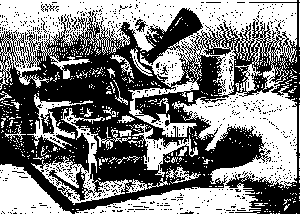
Edison records sound
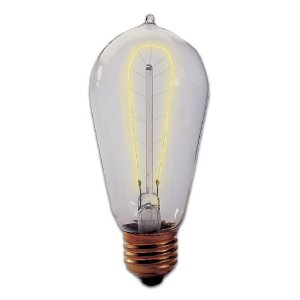
Edison Light Bulb
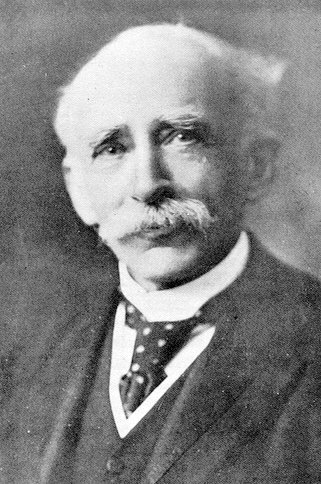
John Ambrose Fleming

Early experiments in broadcasting at KDKA
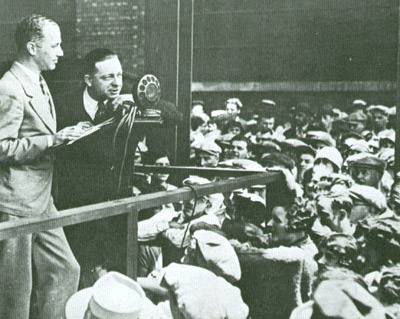
Freeman Gosden and Charles Correll as Sam N' Henry
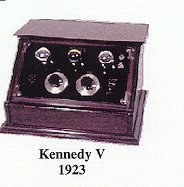
Early radios required batteries, antenna, and multiple dials to tune stations
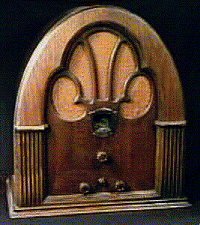
Philco depression era "Cathedral" radio was priced to allow a radio in every home
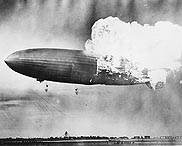
Hindenburg explodes over Lakehurst, NJ,

Jack Webb's (John Randolph Webb) popular Dragnet Series, which began as a Radio drama, was one of the shows that made the transition to television. Webb entered the Army Air Force in WW-II, but was given an early discharge. He began an association with KGO Radio with the "Jack Webb Show," a comedy and variety show. He soon began work on a radio detective drama called "Pat Novak For Hire." That program was successful and it was picked up by the network. Realizing that there was a market for crime and police drama, Webb went on to create another detective show called "Jeff Regan Private Investigator" while also starring in the motion picture Pete Kelly's Blues." As Webb became a well known personality, he was able to sell the NBC network on the idea of a police radio drama based on the Los Angeles Police Department. The resulting show was DRAGNET. Shortly after production began, NBC agreed to take the show to the new medium of Television.